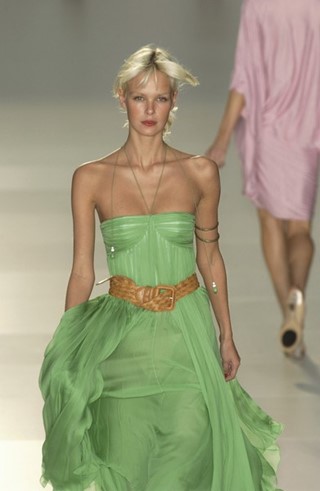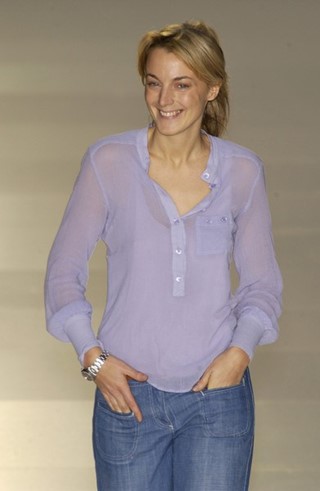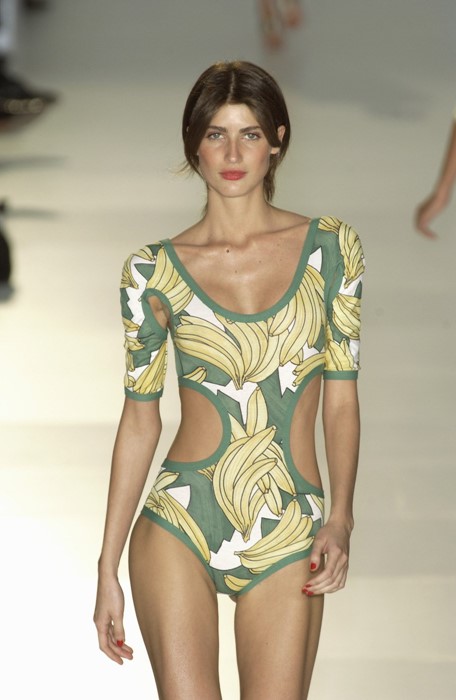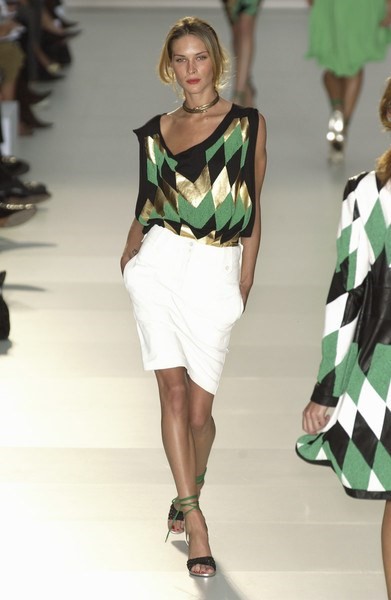We recall the seminal Chloé collection that redefined fashion by celebrating Portobello vintage and Saint Tropez elegance
Phoebe Philo has the Midas touch. During her time at Céline and, prior to that, Chloé, she turned both French brands into cultural verbs. Her recent work at Céline has influenced a generation of women seeking fashion that satisfies their own desires, becoming an aesthetic movement in itself (Céline-ification: think clean minimalism, sophisticated navy and camel combos, chic Semplicità typefaces and a relaxed impeccability). But first were Philo’s seminal years at Chloé, between 2001 and 2006, where she made clothes and accessories for a generation of 20 and 30-something women who often found themselves facing the struggle of either following fashion that didn't speak to their desires, or ignoring it altogether.
Chances are that, if you were relatively fashion-conscious during that half-decade (and the handful of years that followed), and purchased an item of clothing from either the high street or a glossy department store, Philo influenced your wardrobe. Before her tenure, spindly high heels, skin-tight mini-dresses and low-slung hipsters reigned – but Philo proceeded to introduce a whole new vocabulary to the style vernacular: high-waisted wide-leg trousers and jeans (that embraced, not defaced the derrière), gauzy bib-front blouses, chunky heels and wedge shoes, oblong leather bags with purposeful hardware and Grecian-style dresses with rustic accessories. It was that emphasis on easy-to-wear, good-looking clothes that resulted in The New York Times declaring her as the “Chanel of her generation”.
Spring/Summer 2004 marked the height of Philo’s influence and lusted-after originality. In 2005, Chloé sales increased by 60% worldwide and 80% in the US. Hollywood starlets fawned over her designs and all over the world, whether women from knew it or not, they were a walking testimony that Philo is one of the 21st century’s most visionary creatives.

The Show
Unlike many of her contemporaries, Philo’s influences were less thematic, couture-like narratives and more Portobello chic, incorporating boyfriend dressing, vintage and global cultural influences. She studied at Central Saint Martins during the mid-nineties, experiencing the high conceptualism of the likes of Alexander McQueen and Hussein Chalayan and later told The Guardian, “I just wanted to make a pair of trousers that made my arse look good, rather than a pair that represented the Holocaust or something,” elsewhere adding that her relationship with fashion is playful and expressive of what she’s feeling at the time. “For a while I thought, maybe this is some kind of lack of me knowing myself. But then I realised I was being true to myself, because I knew what I felt.”
What she felt was the enduring appeal of 1970s sun-kissed Mademoiselles in Saint Tropez, skipping around in practical ready-to-wear, thus informed S/S04. The collection was a nod to that free-spiritedness, with breezy blouses, kaftans trimmed in silk and miniature pompoms, white cotton and lace separates, striped tees and eyelet and white lace denim. The collection as a whole signified a new direction for Philo – a move away from looks infused with urban sportswear to grown-up femininity; she evolved from her youthful edge to defining youthful elegance. A year later, former Chloé team member Blue Farrier recalled the moment of complete transition to a light-green chiffon dress with a brown belt for this very collection. “Instead of trying to do a look with jeans, a boot, and a jacket, there was a sense of loving a very beautiful dress. But something easy. How Phoebe would like to wear a dress,” she told American Vogue in 2005.

The People
What is central to Philo’s work is Philo herself – she designs for her own wardrobe. One of Philo’s impressive negotiations as a working mother was to relocate the Chloé studio from the nerve centre of Rue du Faubourg Saint Honoré to an industrial space of London’s Kilburn High Road, a short distance from her Brondesbury home and not far from Notting Hill, the centre of the early to mid-noughties ‘boho’ look that aimed to recall the area’s 1960s association with artists and creatives.
This was the age of Portobello Market, which was surrounded by influential vintage dealers such as Rellik and Virginia’s. Philo had been a regular stall searcher since her teenage years, when she wore “platform shoes that were a little bit S&M,” including a pair of satin pink Vivienne Westwood platforms: “the ones Naomi Campbell fell off.” Having attended a local state school in Harrow-on-the-Hill, she was a fan of black West Indian culture with a ‘ragga’ nightlife obsession, experimenting with string vests, tight jeans, ghetto-chic nail extensions and, eventually, a gold tooth, yet by day, she was pony-mad – an obsession that could be seen in the Chloé staples of riding boots and stable blanket ponchos, as well as the metal horse-shaped handle one would push as they entered a Chloé boutique around the world. Portobello became a resource for Philo; it was somewhere she could find tailored Victorian military jackets, silk slips and forties tea dresses that operated as a starting point for her collections. Never one to look dowdy, she remixed the vintage pieces with contemporary verve and urban edged it. “I had a fear of looking like an old thespian, so I always mixed it with something sporty and street,” she once said.

When stylist Bay Garnett collaborated on an editorial shoot with her friend and fellow thrift obsessive Anita Pallenberg for the May 2003 issue of British Vogue, it eventually sparked a fire in Philo’s mind. The fashion story was created using clothes the pair had amassed over the years, worn by their pal Kate Moss and photographed by Juergen Teller. In one image, Moss wears a Fiorucci-esque banana-print tee with a wide brown leather braided belt. “Phoebe called me and said, I love that top. Can I borrow it?” recalled Garnett. The print made its way onto swimsuits and jersey off-the-shoulder T-shirts, while the belt punctuated several looks throughout the collection.

The Impact
There’s no doubt that S/S04 signified the beginning of Chloé’s (and Philo’s) reign over the wardrobes and department stores of the world. Streets heaved with women in wedge shoes, high-waisted jeans and baby-doll blouses, weighed down by heavy, metal-laden handbags. The Paddington, by the way, was £1,380 and every one of the 8,000 made in spring 2005 was spoken for before it reached the stores. As Sarah Mower wrote in her review for Style.com at the time, “At the end, Phoebe herself made a runway turn for photographers in Chloé jeans and a gauzy blue top – a far cry from her usual brief, cool, self-deprecating, British wave. Perhaps that's a sign of her growth in confidence, but it also gave Chloé's worldwide fans their first opportunity to get a good look at the personality who drives the brand.”
“She carved out a look for laidback twentysomethings in the 21st century who like nice clothes but don't want to end up looking like Paris Hilton,” wrote Hadley Freeman in 2009. “Her pretty, unashamedly commercial clothes ran the style gamut from ragga to tailored and girlishly feminine, but their secret was that they were well-cut and easy to wear. There were no tricky shapes, no self-conscious attention-seeking: just good clothes that made the wearer look good too."
More notably, though, Philo was the poster girl for working women, having her daughter, Maya Celia Sally (named after Maya Angelou, Phoebe’s mother, and her husband Max’s, in that order), one season, relying on her team to put out the next, and returning in for spring 2006, before leaving to spend more time with her family – a brave decision in such a fast-paced industry. She continued to maintain her work-life balance at Céline, where she has built an equally influential reach on women’s lives, but recalled the decision to leave Chloé behind to Vogue’s Hamish Bowles in 2013: “It was great to do Chloé, but after five years, I knew more about what I wanted to do and who I was and what I stood for. I had my daughter, and with that came a deep sense of responsibility; my time for work has become precious, and it had to have more meaning. I just couldn’t fake it anymore.”
